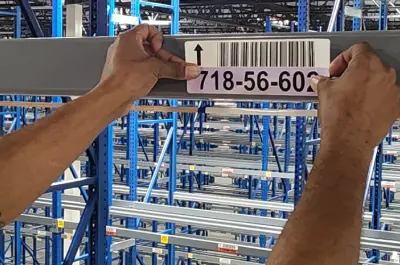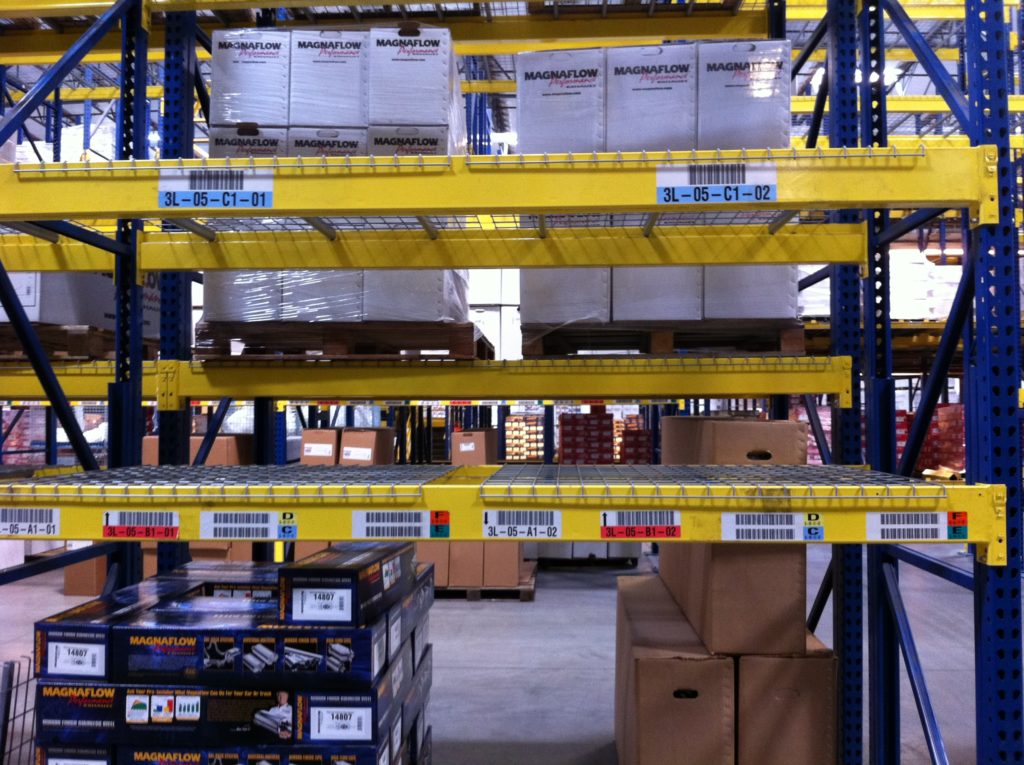Warehouse Solutions
Complete Warehouse Labeling Best Practices Guide & Checklist
Navigating the intricate maze of a bustling warehouse requires more than just a keen sense of direction; it demands a meticulously organized labeling system that acts as a roadmap for efficiency and productivity. Imagine stepping into a warehouse where every aisle, shelf, and bin is clearly marked, guiding you effortlessly to your destination. This is the power of effective warehouse labeling. It’s not just about sticking labels on shelves; it’s about creating a harmonious environment where items are easily found, processes are streamlined, and the warehouse transforms into a well-oiled machine. In this article, we dive deep into the art and science of warehouse labeling, exploring its importance, the different types of labels, how to plan and implement a labeling system, the benefits, and best practices to follow. Join us as we unpack how a simple label can make a world of difference in the complex dance of warehouse logistics.
The Importance of Warehouse Labeling
The significance of labeling within a warehouse cannot be overstated. It is the backbone of warehouse organization, ensuring that operations run smoothly and efficiently. Labels act as critical markers, indicating where items are stored, thus minimizing the time spent by employees searching for products. This organization is not only vital for day-to-day efficiency but also for maintaining safety standards and compliance with regulatory requirements.
Without proper labeling, warehouses face numerous challenges. Misplaced items become commonplace, leading to increased search times and a higher potential for errors in order fulfillment. This disorganization can also result in inventory inaccuracies, which directly impact customer satisfaction and the bottom line. Furthermore, a lack of clear labeling can lead to safety hazards, as employees might improperly handle or store items, increasing the risk of accidents.
Types of Labels Used in Warehouses
Warehouse labels come in various forms, each serving a unique purpose. Location labels, for example, help identify specific areas within the warehouse, such as aisles and racks, facilitating quick navigation. Inventory labels provide detailed information about the products themselves, including SKU numbers and descriptions, enhancing inventory management. Identification labels are used on equipment and tools, ensuring they are easily located and tracked.
Technological advancements have introduced RFID tags and barcodes, offering a more sophisticated approach to labeling. RFID tags allow for real-time tracking of products, significantly improving inventory management and reducing the likelihood of errors. Barcodes, on the other hand, streamline the scanning process, speeding up operations and enhancing accuracy. Magnetic labels and durable materials like vinyl are also popular choices, offering the flexibility and resilience needed in the dynamic warehouse environment.
Common types of warehouse labels:
Planning and Implementing a Warehouse Labeling System
Implementing an effective warehouse labeling system requires careful planning. The first step is to analyze the warehouse layout, identifying key areas and determining the most efficient flow of goods. This understanding informs the selection of appropriate labels and their placement, ensuring that they are both visible and accessible.
Choosing the right labels involves considering factors such as durability, visibility, and compatibility with warehouse management systems (WMS). Labels must withstand the daily wear and tear of warehouse operations, including exposure to dust, moisture, and varying temperatures. Visibility is crucial; labels should be easily readable from a distance, with clear fonts and high contrast.
Consistency is key in labeling. Uniformity in design, color, and placement helps reduce confusion and improves navigation. Additionally, incorporating technology, such as barcode scanners and RFID readers, can significantly enhance the efficiency and accuracy of warehouse operations. These systems facilitate real-time tracking and inventory management, allowing for quicker response times and reduced errors.
Training staff on the labeling system is also vital. Employees must understand how to read and interact with the labels, ensuring that the system is used effectively. Regular audits and updates to the labeling system help maintain its relevance and effectiveness, adapting to changes in inventory or warehouse layout.
Let’s look at a sample warehouse labeling system checklist:
Benefits of Effective Warehouse Labeling
The benefits of a well-implemented warehouse labeling system are vast. Firstly, it significantly improves navigation within the warehouse, reducing the time employees spend searching for items. This efficiency boost leads to quicker order fulfillment and increased productivity.
Accurate inventory management is another critical benefit. With clear labeling, inventory levels are easier to track, reducing the risk of stockouts or overstocking. This accuracy also extends to order processing, where errors can be minimized, ensuring that customers receive the correct items promptly.
Safety is enhanced through effective labeling. By clearly marking hazardous materials and providing easy-to-follow navigation, the risk of accidents is reduced. Compliance with safety regulations is also more straightforward, as labels can include necessary warnings and instructions.
Finally, a labeling system can lead to better space utilization. By clearly identifying storage locations, warehouses can optimize their layout, ensuring that space is used efficiently. This organization can lead to cost savings, as less space is wasted and operations are streamlined.
Best Practices for Warehouse Labeling
To maximize the benefits of a warehouse labeling system, several best practices should be followed. Regular audits of the labeling system ensure that all labels are accurate, legible, and reflect the current warehouse layout and inventory. Any changes in operations or layout should prompt an update to the labeling system.
Training for staff on how to use and interpret the labels is crucial. A well-informed team can significantly enhance the effectiveness of the labeling system, reducing errors and improving efficiency.
Future-proofing the system is also important. As the warehouse evolves, the labeling system should be able to adapt. Choosing scalable solutions and technology-compatible labels ensures that the system can grow and change with the warehouse’s needs.
Best practices for warehouse labeling look something like this:
- Consistency Across Labeling: Maintain a uniform approach to labeling throughout the warehouse. This includes consistent use of colors, fonts, and formats to avoid confusion and streamline operations.
- Regular Maintenance Checks: Conduct routine inspections of labels to ensure they are legible, accurate, and intact. Replace any worn-out, damaged, or outdated labels promptly to maintain efficiency.
- Integration with Technology: Use technology, such as barcode scanners and warehouse management systems (WMS), to complement your labeling system. This integration can enhance inventory tracking and reduce errors.
- Clear Visibility: Ensure labels are placed at eye level and in clear view, avoiding obstructed areas. Labels should be readable from a distance to facilitate quick identification by warehouse staff.
- Use of Color Coding: Implement color coding to differentiate between various sections, product types, or priority items. Color coding speeds up the identification process and reduces picking errors.
- Training for Staff: Provide comprehensive training for all warehouse employees on how to interpret and use the labeling system effectively. Regular refresher courses can help maintain high operational standards.
- Scalable and Flexible Design: Design your labeling system to be scalable and flexible, allowing for easy updates and expansions as your inventory or warehouse layout changes.
- Feedback Loop: Create a feedback loop with warehouse staff to continuously improve the labeling system. Frontline employees can provide valuable insights into what works well and what needs adjustment.
- Optimize for Scanning Equipment: Design labels to be easily scannable with barcode and RFID readers, ensuring quick and accurate data capture for inventory management.
- Safety Labels: Include safety labels where necessary to highlight hazards, provide handling instructions, and ensure compliance with regulations. Safety labels play a crucial role in maintaining a safe working environment.
Final Thoughts
Warehouse labeling is more than just a means of organization; it’s a critical component of efficient warehouse management. A well-planned and implemented labeling system can transform operations, improving productivity, safety, and inventory management. By following the outlined steps and best practices, warehouses can create an environment where items are easily located, processes are streamlined, and the workspace is safer for all. Investing time and resources into a comprehensive labeling system is not just beneficial; it’s essential for any warehouse aiming to optimize its operations and provide the best service to its customers.













